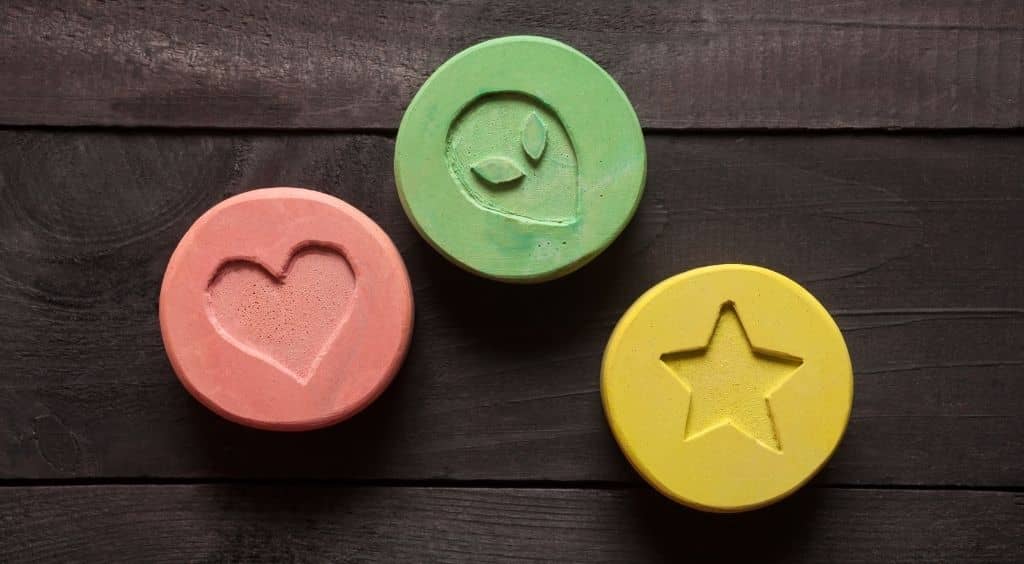
Molly is a street name for the drug MDMA, which is short for 3,4-methylenedioxymethamphetamine. Molly may also be referred to as ecstasy, XTC, or X, and is most commonly abused in the club and rave scene. This is because MDMA produces an energetic high as well as psychedelic effects that are similar to LSD.
While molly is most popular among the rave scene, a wider range of people have started to abuse this drug. According to the National Institute on Drug Abuse (NIDA), 2.6 million people aged 12 or older reported using molly in the year 2020. NIDA also reports, “In 2021, an estimated 0.6% of 8th graders, 0.7% of 10th graders, and 1.1% of 12th graders reported using MDMA in the past 12 months.”[1]
Because molly abuse is popular among adults and adolescents, it is important to understand what it is and how to tell if someone is on it.
When someone takes molly, they will experience a high similar to a mixture of methamphetamine and LSD. This occurs because MDMA alters the way that brain cells like neurotransmitters interact with one another.
MDMA affects dopamine and serotonin. These two chemicals create feelings of euphoria, trust, emotions, and sexual arousal. This is what causes individuals using MDMA to feel close to others around them, experience increased levels of energy, heightened pleasure, and a rush of euphoria.
While people abuse molly for the pleasurable high it is associated with, abusing this drug could lead to an early death. MDMA can cause serious complications associated with an individual’s cardiovascular system and ability to regulate their body temperature.
When ecstasy is consumed, the individual will experience the side effects within 25-45 minutes depending on the dosage and potency of the drug. The peak effects of molly begin about 30 minutes into the individual’s high, lasting up to 3 hours.
The short term signs of molly abuse include:
However, some people who take molly do not experience the pleasurable effects of an MDMA high. Some individuals may feel extremely anxious–almost as if their heart is beating out of their chest. This can cause feelings of agitation, fear, and even paranoia.
Because MDMA affects the serotonin neurotransmitter, repeated abuse of the drug could lead to a depletion of serotonin (serotonin syndrome). This can affect an individual’s mood, sexual desire, and ability to sleep. As a result, individuals who abuse ecstasy long-term may struggle with depression, insomnia, and an inability to feel emotional or physical pleasure.
The long-term symptoms of MDMA abuse include:
Additionally, MDMA has become increasingly impure. In other words, most people abusing molly are buying drugs that do not contain MDMA at all. Oftentimes, people are being given methamphetamine instead of MDMA.
This can be extremely dangerous, especially when the user does not know which substance they are taking. Also, the long-term effects can be hard to predict due to the instability of MDMA content in the individual’s drugs.
Ecstasy addiction can affect an individual’s ability to experience pleasure, feelings of happiness, and even their ability to sleep. In severe cases, some people may experience violent behavior and vivid hallucinations.
If someone is addicted to molly, they may begin to attend dance clubs, raves, and music festivals frequently. This is because those events typically have a large community of molly users.
Family members of long-term molly users may begin to notice their loved one displaying the signs of severe depression followed by intense instances of happiness. This is because their loved one is experiencing a molly comedown and then soothing their symptoms by taking more MDMA.
Lastly, MDMA tends to cause withdrawal symptoms when individuals do not consume the drug. The family members of someone struggling with a molly addiction may notice withdrawal symptoms such as severe mood swings, bouts of aggression, cognitive impairment, memory problems, insomnia, anxiety, and depression.
Because of the withdrawal symptoms associated with molly abuse and addiction, getting professional help is of the utmost importance.
Michael Herbert, The Recovery Guide, has more than 30 years of experience working closely with individuals and families dealing with addiction and recovery issues. He is a seasoned Coach and can help you and your family establish long-term goals and access the tools you need for continued abstinence and recovery for the entire family. Get in touch with Michael today at 561-221-7677 to schedule an appointment.
References: